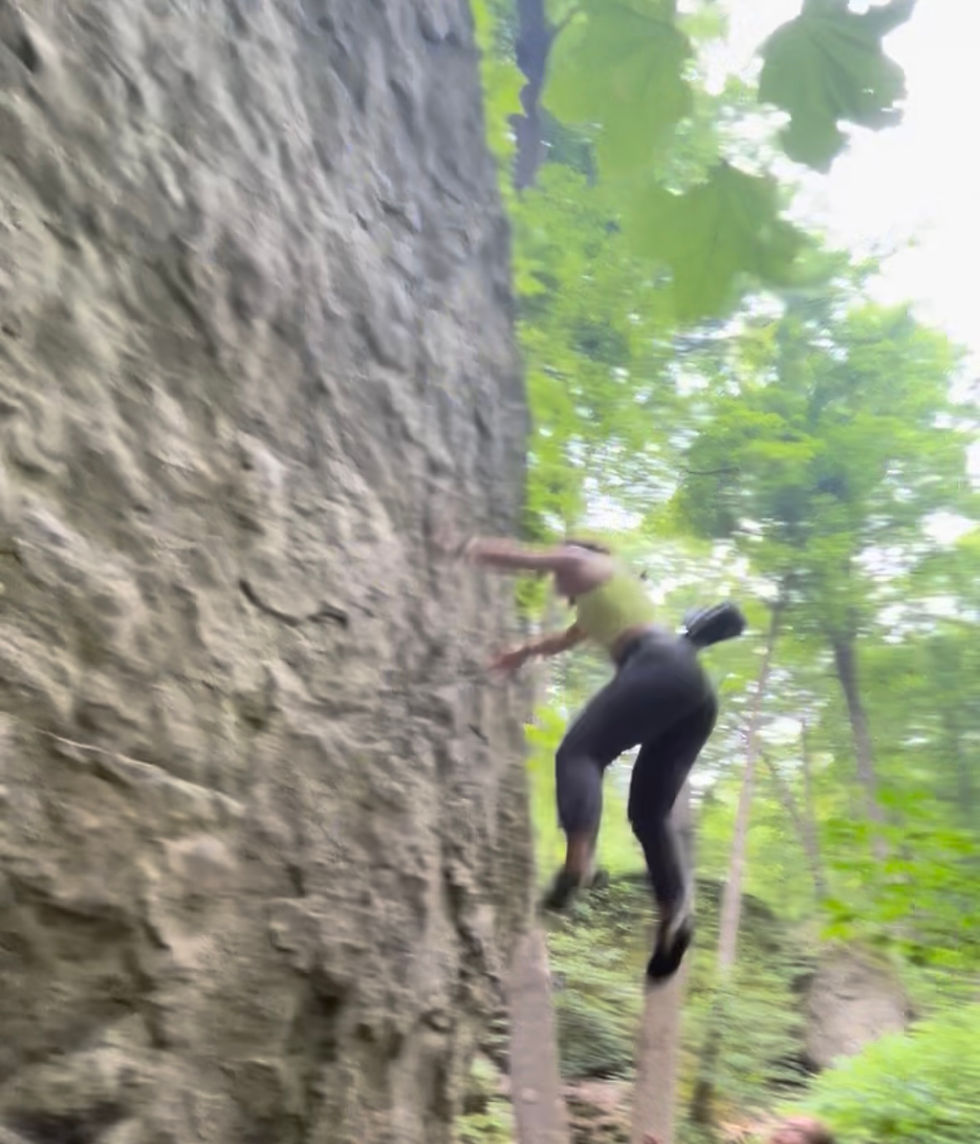What Rock Climbing Taught Me About Life, Law, and Risk
- Mahta Talani
- Oct 9
- 3 min read
Updated: Oct 16
The first time I tied into a climbing rope, I had no idea what to expect. As a former figure skater, I was used to falling, just not from very high up. Turns out I’m actually afraid of heights, which is why I mostly boulder now and you'll rarely catch me on ropes, but that’s beside the point.
Climbing looks like a sport of strength, but it’s really about patience, strategy, risk assessment, and trust. Those same skills are essential for building a sustainable legal career.
Learning to Assess Risk
Lawyers, as a group, are famously risk-averse, and for good reason. But the best lawyers I know have mastered the art of assessing risk and knowing how to toe the line without crossing into territory that doesn’t serve their clients or their careers.
When I first started climbing, I had no idea how to gauge risk. I learned the hard way. On my second outdoor climb, I broke my ankle. I’d watched a friend come down halfway because they didn’t feel safe. My thought: what’s the worst that can happen? I’m also stubborn, so turning around wasn’t an option. I got halfway up, felt uneasy, kept going, and took a bad fall. (pictured below to keep you all entertained)

Three months off the wall later, I learned to trust my “climber’s gut.” I became too cautious for a while, but eventually I found balance. Now I can tell when a risk’s worth taking.
I didn’t practice law for long, but that same instinct has served me in my career. Taking smart, informed risks can open doors you didn’t know existed. Developing your own “lawyer’s gut” takes time, but it’s worth it.
Planning Matters
Climbers don’t just grab the nearest hold and hope for the best. Before you get on the wall, you read the route, visualize the moves, and sometimes watch videos of others climbing the same problem. I climb on Saturdays, so my Friday nights often turn into “research” sessions that involve a deep dive into climbing video rabbit holes. (a wild time, I know)
Law works the same way. From the start of law school, certain career paths are presented as the obvious ones. BigLaw, clerkships, and other well-trodden routes can be great options, but you shouldn’t follow them just because your school or Chambers rankings say so. Know where you want to end up, and work backward from there.
One Hold at a Time
In climbing, we have a term called “projecting”. It means choosing a route that’s above your current skill level and working on it one move at a time. Sometimes that process takes months or even years.
Careers work the same way. You can’t always see the full path forward, but breaking it down into smaller, achievable steps helps. Celebrate the small wins. They’re what keep you moving upward.
And if you’re feeling stuck figuring out your next move, that’s where I can help. Sometimes you just need another perspective to see the next hold.

Falling Is Part of Progress
Every climber falls. Every lawyer makes mistakes. Falling isn’t failure; it’s feedback. Each misstep teaches you something for the next attempt. Sometimes it even shows you that this isn’t the right route for you, which can be the most valuable lesson of all.
Rest Is Strategy
Climbers love to overdo it, and lawyers are no different. We’re all curious about our limits. I can tell you my limit is probably before I get another overuse injury (or so my physical therapist hopes).
Lawyers who refuse to pause eventually burn out. Knowing when to breathe, regroup, and recover isn’t weakness; it’s endurance. Don’t be the associate who clocks 3,000 thankless hours a year without lifting their head to ask if this is still what they want.
TL;DR
Climbing taught me that success isn’t about perfection. It’s about planning well, assessing risk, moving steadily, learning from mistakes, and knowing when to rest.
Climbing rocks and practicing law might look worlds apart, but both reward resilience, preparation, and perspective.
Have you found lessons in unexpected places that shaped how you practice or live?If you need help planning the next stage of your career, I’m here to help.


Comments